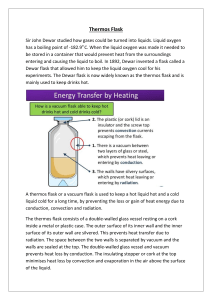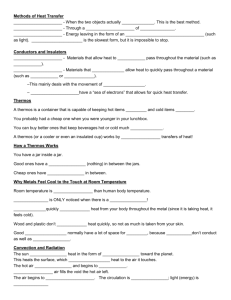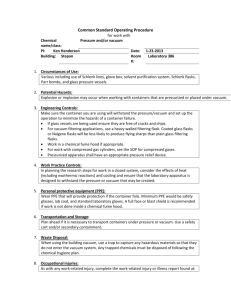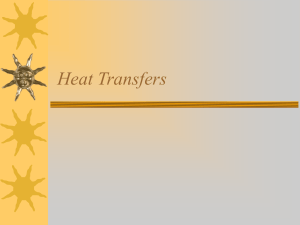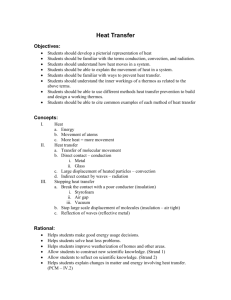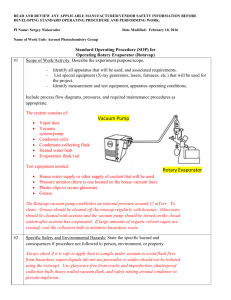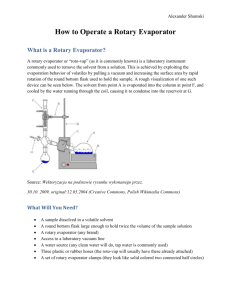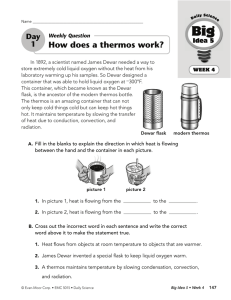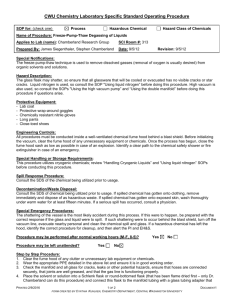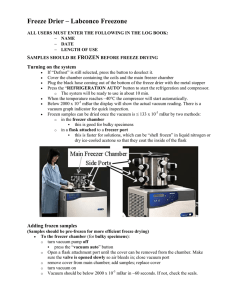The Thermos
advertisement
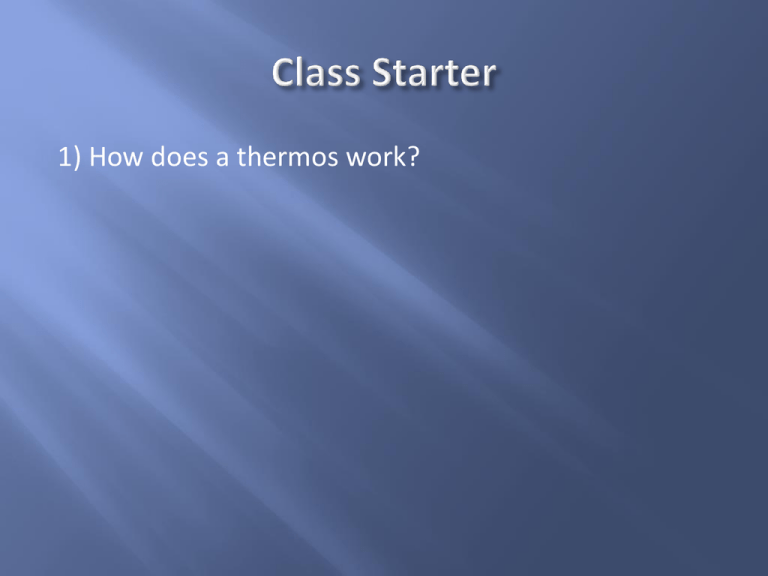
1) How does a thermos work? A thermos, also called a vacuum flask, is a storage vessel which provides thermal insulation thermal insulation = materials used to reduce the rate of heat transfer The vacuum flask was invented by Scottish physicist and chemist Sir James Dewar in 1892 and is sometimes referred to as a Dewar flask after its inventor. The first vacuum flasks for commercial use were made in 1904 when a German company. Vacuum flasks are used to maintain their contents (often but not always liquid) at a temperature higher or lower than room temperature, Domestically and in the food industry, they are often used to keep food and drink either cold or hot. A typical domestic vacuum flask will keep liquid cool for about 24 hours, and warm for up to 8. It is a bottle made of glass, metal, or plastic with an inner and outer wall the narrow region between the inner and outer wall is evacuated of air (called a vacuum) The bottle must have an opening for contents to be added and removed. A stopper made of insulating material must be used to stop heat from exiting originally cork, later plastics. A thermos provides thermal insulation, meaning it reduces the transfer of heat between the thermos and the external environment. Heat is transferred in 3 ways: Convection Conduction Radiation Convection is the transfer of heat energy in a gas or liquid by movement of currents. Example of a convection current: Hot air is less dense (lighter) than cold air, so it rises upwards in your home. As hot air starts to rise it has to push colder air out of its way. So the cooler air near the top of your house moves back toward the bottom to get out of the way. This is why basements are always colder and top floors are always warmer. Conduction is the transfer of heat energy through matter from particle to particle (or atom to atom). Ex: a spoon in a cup of hot soup becomes warmer because the heat from the soup is conducted along the spoon. Heat transfer through radiation takes place in form of electromagnetic waves mainly in the infrared region of the spectrum. Radiation emitted by matter is a consequence of thermal agitation of its composing molecules. The vacuum created by the inner and outer walls of the thermos reduces the transfer of heat from the contents of the bottle to the outside environment. (prevents conduction) The tight stopper stops air from entering or leaving the flask (prevents convection) The reflective lining of the inner chamber reflects infrared radiation straight back in again (prevents radiation) Inside a vacuum flask 1. 2. 3. 4. 5. 6. 7. Screw-on stopper. Outer plastic or stainless steel case. Outer layer of glass coated with reflective material (or stainless steel in unbreakable flasks). Vacuum. Inner layer of glass (or stainless steel in unbreakable flasks). Supports between keep inner vacuum chamber in place. Additional insulation reduces heat losses and cushions flask against impacts. http://www.wisconline.com/Objects/ViewObject.aspx?ID=SCE304 Today: Homework for tomorrow: Individual research (3 good websites and some relevant information from each), print by end of class, signed by me Design plan: draw a model of your thermos which illustrates it’s parts and the materials chosen (to be handed in) Tomorrow: get together with group to plan materials Friday: build Monday: Test Tuesday: Hand in report (individually)
